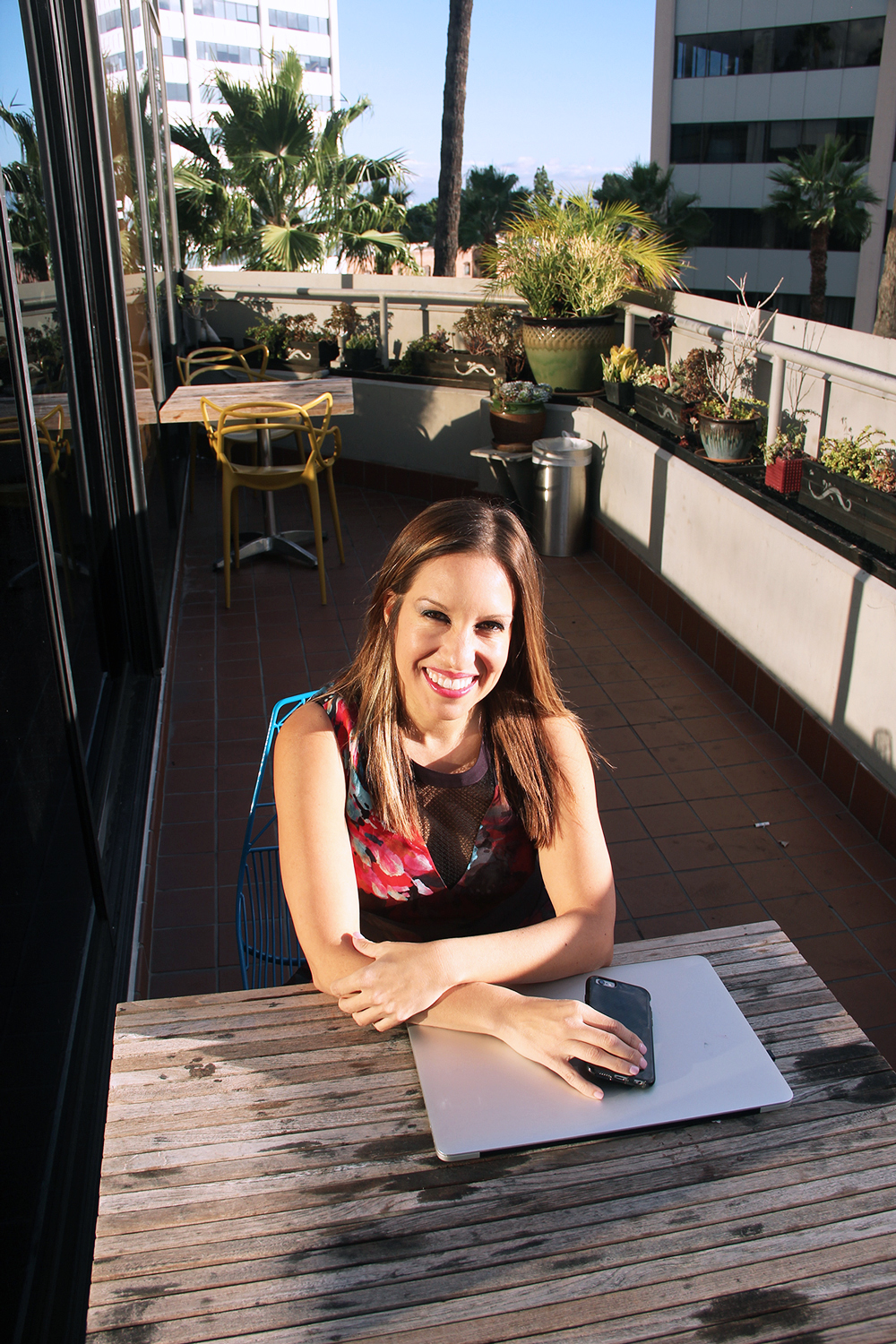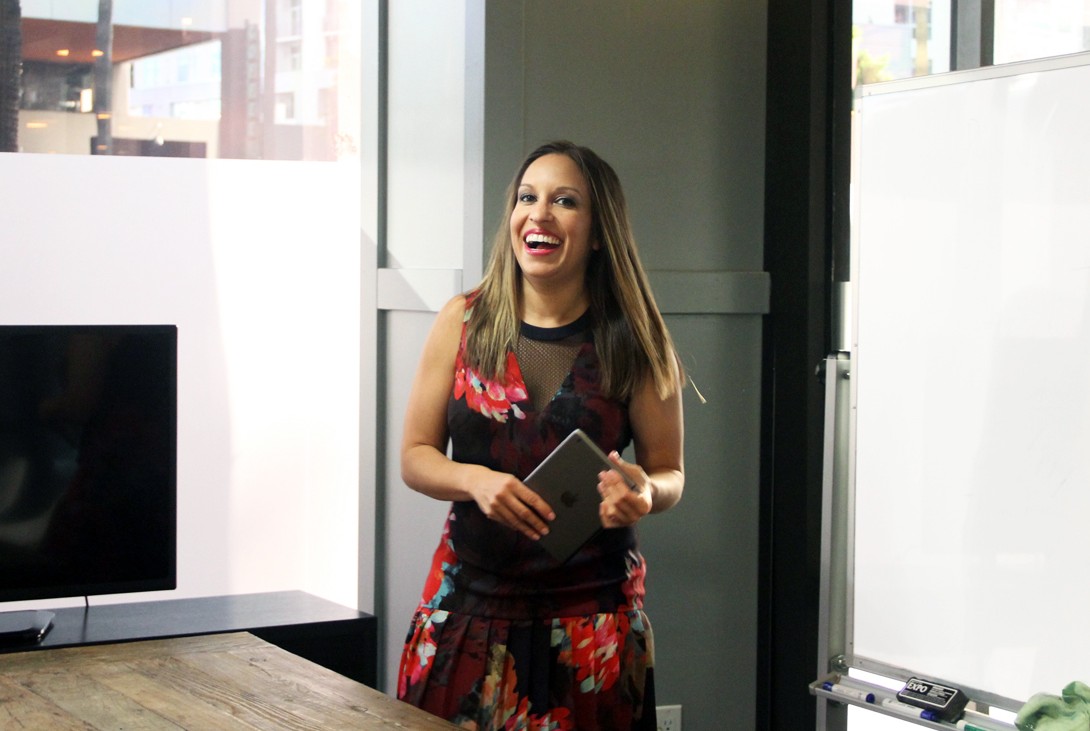Kick-Ass Web Developer Potsie Rivera Shares Her Experiences in the Tech World

Image: Potsie Rivera, courtesy of Brittany Hewitt
In a world where the tech sector is exploding, and “internet” is almost synonymous with “new jobs,” why are women still left out of the convo?
Earlier this fall, I attended the kickoff panel for an all-female hackathon at USC’s Annenberg School for Communication and Journalism, called Hack the Gender Gap. While there, I had the pleasure of meeting Potsie Rivera.
Potsie designs apps you love like Grindr.
Potsie became an app developer through a mixture of luck, skill, and persistence. She’d been passionate about design all her life, but along the way, she had to make some risky gambles. “Photoshop was like buying magic beans,” she remembers. Yet she took the plunge and bought the software, having heard through word of mouth that it’s step one for aspiring graphic designers. Potsie enrolled in a design class, discovered her passion, and eventually received her masters in design after graduating from University of California, Berkeley. In her college years, she was first exposed to hackathons and found them mesmerizing.
In title, Potsie’s current job description is a UI / UX designer. For those who don’t know the jargon, Potsie explains, “UX is the user experience, while UI is the user interface.” She loves it because she quite literally shapes the user’s experience: this field perfectly merges her primary interests in art and computers.
In the past, she has done interactive and visual design for companies like CBS Interactive, Grindr, and the start up Localmind. For each app, she makes sure the buttons are in the right place for users to have the best interaction, by asking herself, “How do things look and feel?” She’s constantly challenging herself: “What’s a different way to make people interact?” Often, Potsie finds herself at the unique intersection of technology and psychology. As a designer, she’s perfectly suited for the task, choosing where to put certain buttons given the ways different people interact with their phones. As far as future endeavors, Potsie plans to go even further into the tech world and go into creating app hardware.
Given all of this success, what obstacles still stand in the way of women in the tech field?
Potsie argues that confidence is the key to making your voice heard in a male-dominated field. “You were hired because you are sharp and you have to bring that game all the time.” She preached, “Your work will speak for itself.”

Still, Potsie admits that we’re not 100% there yet. When asked if there are situations where she has felt hindered by being a woman, Potsie laughed: “Yes, because you aren’t a bro.” She’s experienced sexual harassment in the workplace, and the inevitable moments of exclusion. Often, the male to female ratio leaves women truly outnumbered. “I always entered as a designer as the only female there.” Potsie noted that statistics have proven that heads of companies are not in favor of working with women. “On LinkedIn, you see [women] around, and they are not in the workplace.”
Potsie cited tech exposure as the key reason for the discrepancy between men and women in the tech scene.
She remembers, “[The gender] ratios were even in grad school, even more females sometimes.” While graphic design attracts many women, the tech side is somehow largely male – dominated. Most boys get more tech exposure than women from a young age and that gives them an up, or a confidence, to set their minds towards learning these skills. “Women aren’t getting that up… UI/UX has been around a long time, but the field is booming right now and there are not enough women in it.”
Potsie has some strong feelings in regards to the word feminism: “One – we need to stop being afraid.”
When asked if she is a feminist, Potsie replied “Totally, 100%.” Potsie opened up about some of her feminist role models, citing her mother as her chief motivator: “When I look at my mom, I see the struggle.” Her mother did it all – worked a full length career while raising a family and she taught Potsie that “education will set you free.” Potsie explained that women must lead by example. Potsie remarked, “To be a good feminist, you have to be empathetic; we’re in a challenging world and time for women, all the time.”
The negative connotation against the feminist movement completely misses the boat, in Potsie’s view. “It’s about advocacy for equality.” Feminism is more of an overarching disposition towards equality that is largely seen in successful, powerful women. When I asked Potsie the usual feminist questions, such as “How do you balance having a family and a career?” she laughed, “I’m all for love, but sometimes you love what you do.” This response is generally deemed more acceptable for a male than a female, but Potsie uttered this explanation with perfect confidence. Ultimately, opening the discourse on feminism affects people at the most basic level. As Potsie hinted at, it is largely important for girls to hear examples of women breaking through what society sees as “gendered” fields.

And now, the question all you techies have been waiting for: what’s her favorite app? On this topic, Potsie sighed and remarked she “needs more time.”
Currently, Potsie has a soft spot for Metamorphabet.
Metamorphabet is an alphabet-teaching app for kids she downloaded after she randomly saw it at Starbucks. Potsie loves that it is interactive, and more importantly, aesthetically pleasing.
This seems to be the quintessential feature of web design – making something people actually enjoy using. Through examples like Potsie, we see that the world needs more women in the tech field, which is still largely considered a “boys club.”




